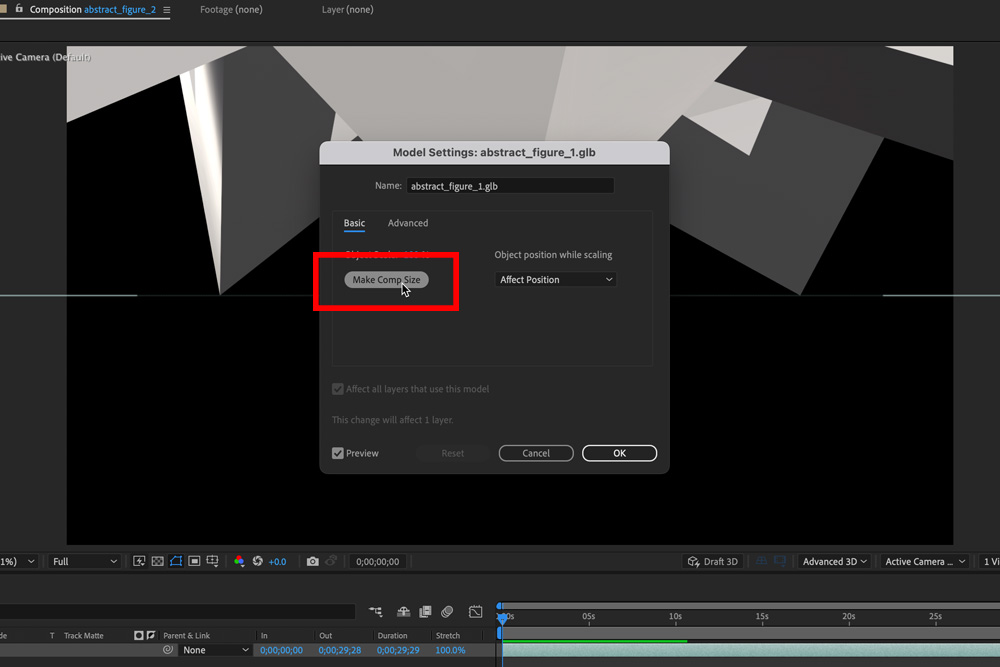After Effects and 3D Models
Adobe After Effects, a powerhouse in the world of video editing and motion graphics, has introduced a groundbreaking update in its 2024 version. This latest release now supports the import of real 3D models in the formats of .GLB and .glTF. These formats have been transforming the way professionals work with 3D content, bringing a new dimension to After Effects' capabilities.
Understanding .GLB and .glTF Formats
.glTF (GL Transmission Format) is an open-standard file format for 3D models and scenes. It's optimized for efficient transmission and loading, making it ideal for web and application use. This format supports animation, making it versatile for various dynamic 3D projects.
In contrast, .GLB is the binary version of .glTF. It packages all the elements of a 3D model, including textures, materials, and animations, into one single, compact file. This makes .GLB files incredibly efficient for sharing and downloading, as they require no additional files to display the model.
Why Choose .GLB or .glTF?
The choice between .GLB and .glTF depends on your project needs. .glTF is perfect for projects where editing flexibility is key, as it keeps elements in separate files. .GLB, being an all-in-one format, is simpler to manage and is preferred for its compactness, especially in web and mobile applications where file size and loading speed are critical.
The Most Popular Format: .OBJ
While .GLB and .glTF are making waves, .OBJ remains the most popular format in 3D modeling due to its simplicity and wide compatibility. Adobe plans to add .OBJ support in a future update to After Effects 2024, further expanding the software's 3D capabilities.
Where to Find .GLB Files?
For both free and paid .GLB files, numerous online repositories, and marketplaces are available. Websites like TurboSquid, Sketchfab, CGTrader, and Adobe Stock, to name a few, offer extensive libraries of 3D models in various formats, including .GLB. These platforms provide models ranging from simple objects to complex scenes, catering to both hobbyists and professional needs.

Importing .GLB and .glTF Files into After Effects
Importing these files into After Effects 2024 is straightforward. Here's a simple guide:
STEP 1: Go to FILE > Import > File and select the .GLB or .glTF file you wish to import.
STEP 2: Once imported, drag the file into an empty timeline to create a new composition.
STEP 3: A Model Settings dialogue box will appear. Select 'Make Comp Size' for better alignment of the 3D object and click 'OK'.
That's it! Everything else is animating the controls or creating and animating a camera to make your animation come to life. This new feature in After Effects 2024 significantly enhances the software’s capabilities, opening up a world of possibilities in 3D animation and effects. With the support for .GLB and .glTF, along with the upcoming addition of .OBJ, After Effects continues to cement its position as a leader in motion graphics and visual effects software.
Our Los Angeles Business and Computer Skills Training Centre offers Adobe After Effects Live Online Training. Simply contact us or fill out our quote form to begin your journey.





